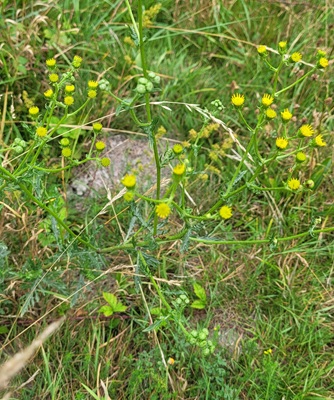Flower Properties
| Property | Value |
|---|---|
| English Name | Hoary Ragwort |
| MainColor | Yellow |
| PlantType | |
| Growth Type | |
| Season | August |
| ImageUrl | Jacobaea-002 |
| Photographer | DP |
| Location | |
| Human Toxicity |
Flower Details
Description
Ragwort is a perennial herb that can grow up to 1.5 metres tall, featuring jagged, lance-shaped leaves and bright yellow flower heads. It blooms from late summer to autumn, attracting various pollinators.
Distribution
This plant is commonly found across Europe and parts of Asia, thriving in grasslands, roadsides, and disturbed areas. It prefers well-drained soils and can often be seen in sunny locations.
Medicinal/Other Uses

✅ Historically, ragwort has been used in traditional medicine for its anti-inflammatory properties. However, its use is not common in modern herbal practices due to its toxicity.
Edibility

Ragwort is not considered edible and can be harmful if ingested. It contains alkaloids that can cause serious health issues.
Human Toxicity

Avoid handling ragwort without gloves, as its sap can cause skin irritation in some individuals. Ingestion of any part of the plant should be strictly avoided.
Pet Toxicity

Highly Toxic to horses and livestock - ingestion can cause liver failure and other serious health issues.
Active Compounds
Ragwort contains pyrrolizidine alkaloids, which are known to be hepatotoxic and can cause liver damage.
